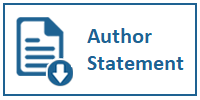Millennial's Media Consumption Pattern in Malang
DOI:
https://doi.org/10.31937/ultimacomm.v12i1.1490Abstract
Nowadays, digital media replaces conventional media in rapid ways since Millennial prefers digital media over conventional media. Digital media makes it easier to access information and considered as capable of fulfilling today's generation needs of information. This study aims to elaborate Millennia's intensity towards reading both digital and conventional media, to explore their expectation (gratification sought), and also to figure out the media's capacity to fulfill their needs (gratification obtained). This study uses qualitative methods, and data are obtained through in-depth interviews in order to reveal ulterior choices of four informants consist of journalist students from four universities in Malang. This study shows that Millennia's intensity in reading printed newspapers is immensely low. This phenomenon happens because, unlike access to digital media that can be found conveniently, printed newspapers are difficult to get around their surroundings. Millennia's Gratification Sought towards media lies in five most important matters, namely: to gather information, to learn news-writing, to spend leisure time, social interaction materials, and to have free-hoax information. Millennial considers that online media is more capable of fulfilling those five matters than the printed newspaper (gratification obtained).
Keywords : print media, digital media, uses and gratification, millennial
Downloads
Downloads
Published
How to Cite
Issue
Section
License
Ultimacomm Jurnal Ilmu Komunikasi allows readers to read, download, copy, distribute, print, search, or link to its articles' full texts and allows readers to use them for any other lawful purpose. The journal allows the author(s) to hold the copyright without restrictions. Finally, the journal allows the author(s) to retain publishing rights without restrictions
1. Authors are allowed to archive their submitted article in an open access repository
2. Authors are allowed to archive the final published article in an open access repository with an acknowledgment of its initial publication in this journal















